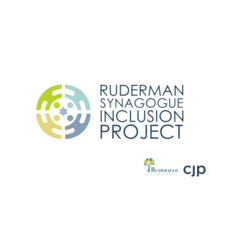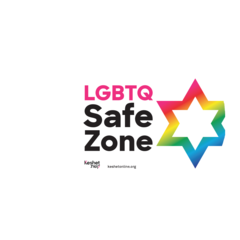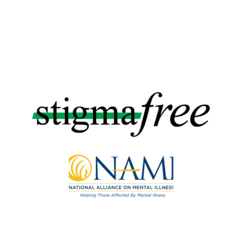Yom Kippur 2006
I am standing here today because of a question I once asked Rabbi Jaffe. He had not yet become our rabbi, and there was something important I needed to know about him. “How do you view congregants who don’t think they believe in God?” I asked. It was not a question he expected. But his answer was swift and sure. “With respect,” he said, in essence. I was satisfied.
Today he has asked me to answer a question. Why am I here? In a synagogue? Why for 34 years have I participated actively in an institution whose declared mission is “to worship God in accordance with the faith of Judaism”—a God whom I find very difficult to accept?
To respond, I must go back to the place and time that formed me—New York City in the 40s. My parents emigrated from Poland in the 1920s, drawn like millions of others to the gleaming, wide-open promise of a new life in a new world. That promise, the promise of America, was my cradle—and my temple. According to my father, synagogues belonged in Europe, where Jews had nothing else. In America Jews don’t need synagogues; they have everything else.
In my parents’ home, the fervor of social justice and politics took the place of religion. To me, being Jewish meant attending rallies, sitting around a table and arguing politics, attending the Yiddish Theater on
Second Avenue
, singing Zionist songs, and, of course, enjoying the delights of my mother’s kitchen—all within the vibrant, colorful cauldron that was New York City in the 40s and 50s.
Then, in 1964, I left the warm Jewish cocoon that was my New York for the diaspora, the frozen wilds of Massachusetts, to attend graduate school at MIT. And I met the man I wanted to marry—a Southerner and a non-Jew. There I was, knowing nothing—nothing!—about Judaism outside the New York cultural-politicalgastronomical scene, and yet realizing it was important to me—powerfully, soul-deep important—to marry a Jewish man. And so my husband converted, out of love for me, yes, but also out of respect for Judaism. As he said at the time, having lived in New York City for several years, he had become partly Jewish anyway. We married, settled into domestic life, and left religious questions behind once more.
Then we had a daughter, and one day I looked into her eyes and saw something of the woman she would become. I knew that I wanted that woman to be a Jew. But how could I give her a Jewish identity outside the ethnic incubator of New York? And that is how we came to TempleIsaiah.
It was a move of desperation. I had been inside synagogues only a handful of times. When Jim and I first walked into this building we felt like aliens--frightened aliens. I feared that someone might take one look at us and yell “Trayf! Trayf!” and chase us out. Instead we were introduced to a very agreeable young man with curly dark hair who called himself a Rabbi—no beard, no yarmulke, no long black coat, no sour, judgmental look. Rabbi Cary Yales actually seemed to understand our situation and encouraged us to give TempleIsaiah a try. We did. That was in 1974.
Our transformation into synagogue goers was a gradual one. It had to be, given our total cluelessness. When we enrolled our daughter in the kindergarten class, we were told to prepare her by teaching her the shma. I remember dashing home anxiously to phone a Jewish friend and ask, in desperation, “What’s a shma?” I felt uncomfortable at services. Prayers, especially English prayers in which I could understand what I was saying, did not suit me at all. Praise a God? In a world ruled by inequity, suffering, random tragedy? But something kept us here—something expressed in the saying, “ Join a synagogue. Stay for a congregation.”
Quite simply, TempleIsaiah was a community to which we wanted to belong. No rigidity here. Instead, I found a climate of open, give-and-take discussion that allowed me to be me and that was, in spirit, reminiscent of the kitchen-table atmosphere of my childhood. It was a community that kept me thinking and talking and spiritually open, a community that allows me to speak to you with complete honesty on this, our holiest of days.
Jews exist only in community. They need other Jews—to worship, to learn, to celebrate, to mourn, to argue, and to do good in the world. In ancient times we were obligated to gather at the temple in Jerusalem for our sacred observances; after the Temple’s destruction we gathered in synagogues. In medieval Europe, we gathered in towns. We gather in rallies for social justice. We gather at theaters and concert halls. We gather in our kitchens and our livingrooms. TempleIsaiah became my gathering place. I joined the choir, I took every course available, I joined committees, I began to learn about my history and my religion, I even celebrated my bat mitzvah. A whole new world was revealed to me—actually, a very old world, filled to overflowing with events and stories and wisdom that I had never known about.
First and foremost, TempleIsaiah became for me a learning community, and so it has remained. For me, as for most Jews, learning is a form of worship. Seeking knowledge is a kind of hymn to the complexity and marvelousness of the world and to the astounding ability of the human brain to try to comprehend it. Science and reason take us deeper and deeper into such comprehension, but in the process they simply rephrase the questions and intensify the awe.
Our early forebears asked the same great questions of life through stories. And after centuries of telling and retelling, of discussions and debates, the stories were collected into a book and a heritage that formed the history of a people and offered a common syntax, a common grammar, with which to talk about the condition of being human.
Each society creates its own stories, rituals, and rules as a way of guiding people through the challenges of living, and each way has something to offer. But at Temple Isaiah I discovered the Jewish way, a way that links me to millennia of ancestors, a way that helps me identify my place in the world, a way that sensitizes me to life’s rhythms and passages, a way that elucidates the ethical and social ideals I grew up with, and a way that affords me a vocabulary and a framework within which to ponder the intractable puzzle of human existence.
I have often sat in classrooms in this building, in a group of smart, questioning women having an absolutely terrific time dissecting Torah or Talmud, and I’ve thought— how incredibly lucky am I to be living at this time and in this place where I am free— where I am even encouraged—to study those writings and to take from them what is meaningful to me. I love examining the words of Torah and Talmud and trying to figure them out, pull them apart, turn them around. I love that the Talmud provides conflicting answers to questions. I love that students learn Talmud by arguing with their study partners. I love the challenge, the constant questioning that is part of being Jewish.And I love that the questions are rooted not with the angels or paradise but in the real world, in the complexities of just getting through life. Have I found any answers? Who knows. But I certainly have found different ways to ask the questions. And asking questions is a holy exercise in Judaism, as Rabbi Jaffe explained to us in his sermon this morning.
Of course I cannot ignore the fact that this community that offers me so much is a religious community. Belief in God—a supreme being who watches over us—is not provable. It is a decision we make to shift to a different part of our psyche. But for many of us who cannot make that shift, the perils and the wonders of human existence can still prod us to seek some transcendent something—a force, a spirit. It is no surprise that after 9/11 people poured into places of worship, seeking not only solace but something else, something bigger than themselves and the everyday world to connect with. Perhaps millions of years of evolution have hard-wired us to feel such a need. But we are not hard-wired to fulfill that need only in God. The grandeur of the stars, a flower, a seashell, the smile of a baby, Mozart’s Jupiter Symphony—the transcendent effect of phenomena such as these is so powerful and yet so common that they have become cliches. Surely we all have such moments of being moved beyond ourselves. And for many people, those feelings can be generated by prayer—by the words that we recite on our holy days and on Shabbat which are addressed directly to Adonai, to Eloheinu Melech ha Olam. Am I one of those people? Well, no. And sort of.
On the one hand, I still find it uncomfortable to address myself to a supreme being I don’t accept. I cannot praise a creator for mercy and beneficence in a world that is so flagrantly unmerciful and unbeneficent. I am disturbed by prayers in which we declare ourselves unworthy of recognition by the God who is supposed to have given us life. In fact, I balk at the very idea of a God who demands to be worshipped.
On the other hand, prayer works. No, we don’t often get what we ask for, but we do get something else that’s important. A recent study found that the rates of recovery for cardiac patients who were prayed for were worse than for those who were not prayed for. In contrast, studies have demonstrated time and again that nonpetitionary, personal prayer has beneficial physical effects, including lowering the blood pressure.
And indeed I have experienced the power of prayer, of being carried to a different place. As one example, when I’m sitting in this sanctuary on the Holy Days, surrounded by a thousand Jews pronouncing in synchrony the same words that have been pronounced for thousands of years. As another, when I find myself chanting V’ahavta with all my heart, with all my mind, with all my being—declaring sublime love for an Eternal God who I don’t even think is there. Today I trembled at the power of Una tana tokef: “On Rosh Hashanah the decree is written, on Yom Kippur it is sealed: who shall live and who shall die . . .” During Sisterhood Women’s Weekends, the sublime sound of scores of women’s voices raised in songful prayer has lifted me to another place. The antiquity of our prayers, the universality of what they have to say, the tragic and miraculous history they carry, the hypnotic effect of the chanting—these can move me in ways I cannot explain.
Time passes, and we find ourselves and our lives changing—usually in ways we could never have foreseen. The man my daughter chose to marry is—a rabbi. A wonderful man, and a wonderful rabbi. And this is one of the things he had to say about Judaism in his Rosh Hashanah sermon: “What Judaism teaches is that life is not about being happy. It is about being awake, growing, and experiencing the bigger connection.” That same son-in-law is partly responsible for expanding that connection for me. In just a few weeks, my husband and I are due to become grandparents for the first time, and already I am experiencing a shift in my sense of that bigger connection. I have a vivid image of a long, long line of Jewish women extending back to Sara and forward to the end of time. I have a place in that line, my daughter stands in front of me, and soon, God willing, her daughter will stand in front of her. When Rabbi Yales’ first grandchild was born, he described the indescribable with these words: “I have now seen the face of God.” I hope soon to see the face of God in my granddaughter—and in that God I will believe.
Ken y’hi ratzon. May it be God’s will.





